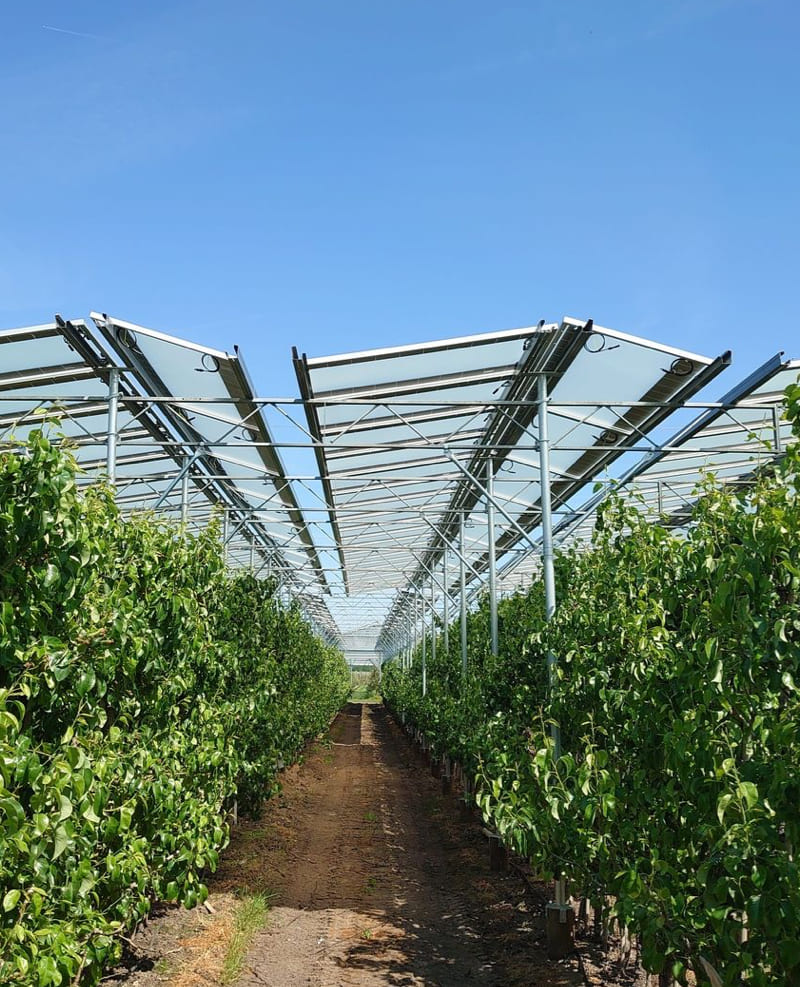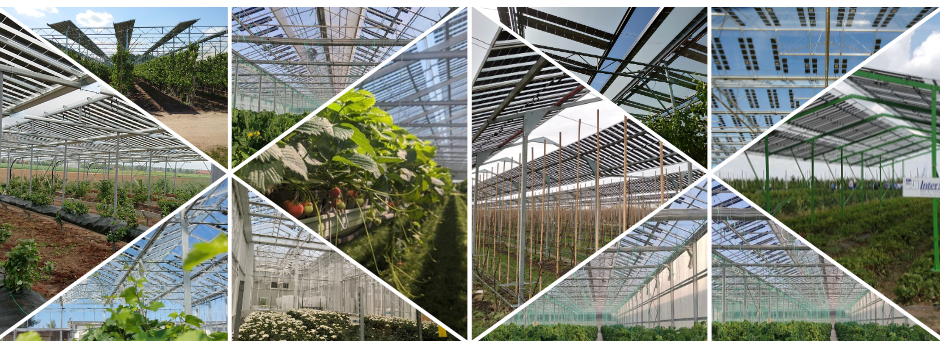Agrivoltaics: Benefits and Applications in Agriculture
What Are Agrivoltaics?
Agrivoltaics is an innovative solution that combines agricultural production with solar energy, enabling simultaneous crop cultivation and electricity generation. Semi-transparent solar panels allow sunlight to reach crops while also protecting them from extreme weather conditions and improving agricultural yield.
The Innovation of Brite Solar’s Agrivoltaics
Brite Solar’s agrivoltaic systems stand out due to the nanotechnology incorporated into their semi-transparent panels. These panels contain specialized nanoparticles that optimize light management by converting ultraviolet radiation into red spectrum light, which is more beneficial for photosynthesis.
As a result:
- Enhanced plant growth, as crops receive the optimal amount of light.
- Increased agricultural yield, leading to higher production and better crop quality.
- Protection from UV radiation, reducing plant stress and potential damage.
Benefits of Agrivoltaics
- Improved Agricultural Yield
- Partial shading reduces heat stress, allowing plants to grow more efficiently.
- Controlled solar radiation protects crops from excessive heat and cold extremes.
- Water Conservation
- Semi-transparent panels reduce soil evaporation, decreasing the need for irrigation.
- Wind protection helps retain soil moisture.
- Crop Protection
- Shields crops from hail, heavy rainfall, and harmful UV radiation.
- Provides defense against extreme weather conditions affecting production.
- Energy Autonomy for Farms
- Farmers can reduce energy costs by using solar power for irrigation, storage, and equipment operation.
- Excess energy can be sold back to the grid, generating additional income.
- Economic Viability and Investment Benefits
- Agrivoltaics increase land value by making agricultural fields more productive.
- Government incentives and subsidies are available for implementing such systems.
Applications of Agrivoltaics
- Mid- and Low-Height Crops
- Ideal for vineyards, vegetables, strawberries, herbs, and crops sensitive to excessive sunlight.
- Greenhouses with Energy Autonomy
- Can be installed on greenhouses to provide sustainable energy while optimizing microclimate conditions.
- Open-Field Extensive Farming
- Suitable for areas requiring partial shading to protect crops from excessive heat.
Conclusion
Agrivoltaics provide a dual benefit by integrating agricultural productivity with solar energy generation, making them a sustainable solution for modern farmers. When properly implemented, they can enhance agricultural output, reduce environmental impact, and improve the economic sustainability of farming businesses.
For more information on Brite Solar’s semi-transparent panels and innovative solutions, visit our website: www.britesolar.com.
Written by Dimitris Bellos | LinkedIn: Dimitris Bellos
























